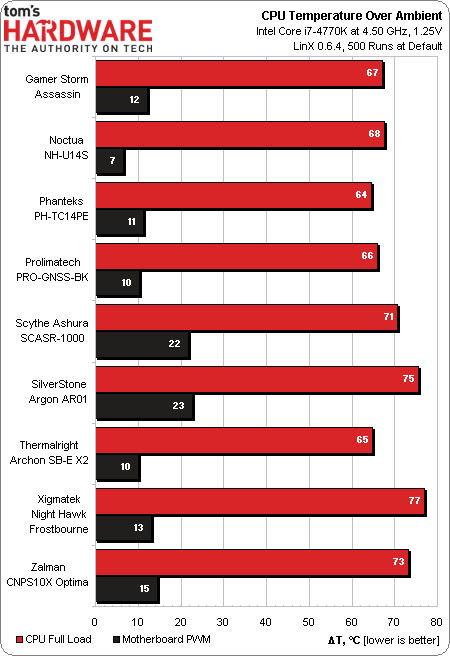Nine Big Air Coolers For Intel's Haswell CPUs, Reviewed
Intel's Haswell-based CPUs have a unique cooling problem that leaves many overclockers in a quandary. Today, we're rounding up nine different sink and fan combinations to see if any can contend with the fourth-gen Core processor's copious heat.
Results: Cooling And Fan Speed
Why you can trust Tom's Hardware
The most noticeable feature of our temperature charts is the narrow range of approximately 12° between highest and lowest CPU core temperatures. Dismantled Core i7-4770s suggest that this is due to the interface material Intel uses. At best, this shows that huge improvements in cooling technology are needed to create relatively small drops in temperature.
The results are also the average of all four highest temperatures, and some cores run hotter than others.
Scythe’s Ashura is the hottest cooler to stay under the processor’s 100° limit at a room temperature of 23°. Zalman’s CNPS10X Optima failed the test at just over 21° room temperature, and hours of extra A/C were required to get the room cold enough to finish Argon AR01 and Night Hawk Frostbourne measurements.
We might have blamed Xigmatek’s white paint for the cooler’s inability to cope with a Haswell-based CPU at a mere 1.25 V, if not for the audible cues to fan speed. The slower speed likely corresponds to less airflow, though fin design is also a potential factor.
Current page: Results: Cooling And Fan Speed
Prev Page Test Settings And Benchmarks Next Page Noise And Acoustic EfficiencyGet Tom's Hardware's best news and in-depth reviews, straight to your inbox.


